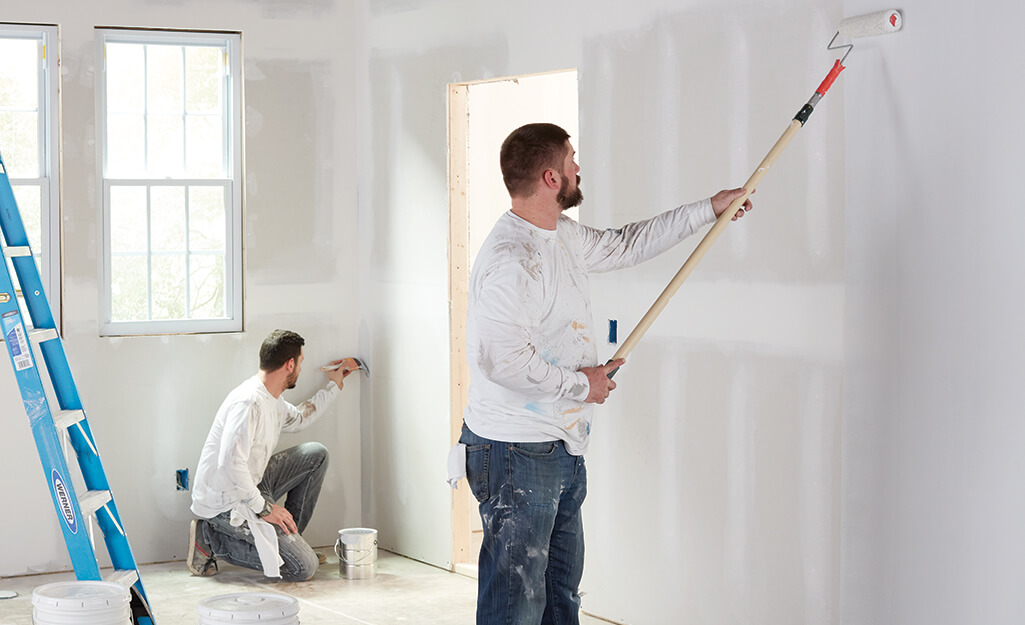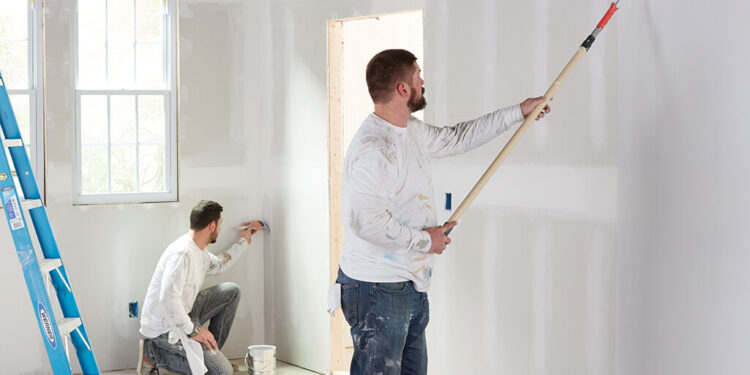Embark on a journey into the world of residential house painting where colors breathe life into homes and protect them from the elements. In this guide, we explore the art of painting homes, from enhancing curb appeal to selecting the perfect finish for every room.
Learn about the importance of colors, the steps involved, and how to choose the right hues that harmonize with your home's architecture. Let's dive in and discover the transformative power of a fresh coat of paint.


Importance of Residential House Painting
Painting a residential house is essential not only for aesthetic purposes but also for maintaining the overall condition of the property. It plays a crucial role in protecting the exterior and interior surfaces from wear and tear, as well as enhancing the curb appeal of the home.Enhancing Curb Appeal
One of the key benefits of residential house painting is its ability to enhance the curb appeal of a home. A fresh coat of paint can instantly improve the appearance of the house, making it more attractive and inviting. It can also increase the property value, as a well-maintained exterior is more appealing to potential buyers.Protecting from Weather Damage
Painting the exterior of a house provides a protective barrier against harsh weather conditions such as rain, wind, and sunlight. This helps prevent moisture from seeping into the walls, which can lead to rot, mold, and other structural damage. Regular painting maintenance can significantly extend the lifespan of the building materials.Creating a Welcoming Interior
Interior painting is equally important as it can transform the living space into a warm and welcoming environment. The choice of colors and finishes can affect the mood and ambiance of each room, making it more comfortable for the residents and their guests. Additionally, a well-painted interior can contribute to a sense of cleanliness and well-being.Types of Paint Finishes for Residential House Painting
When it comes to residential house painting, choosing the right paint finish is essential for achieving the desired look and durability. Different types of paint finishes offer varying levels of shine and durability, making them suitable for different areas of the house.Matte Finish
A matte finish has a flat, non-reflective surface that is great for hiding imperfections on walls. It provides a smooth, elegant look but is less durable and can be harder to clean. Matte finishes are ideal for bedrooms, living rooms, and ceilings.Satin Finish
Satin finishes have a subtle sheen that is easy to clean and offers moderate durability. They are a popular choice for high-traffic areas like hallways, kitchens, and bathrooms. Satin finishes strike a balance between matte and glossy finishes.Semi-Gloss Finish
Semi-gloss finishes have a noticeable shine and are highly durable and easy to clean, making them perfect for areas prone to moisture, such as kitchens and bathrooms. They are also suitable for trim work and doors to add a touch of elegance.Glossy Finish
Glossy finishes have a reflective surface that adds a luxurious look to surfaces. They are extremely durable and easy to clean, making them ideal for doors, cabinets, and other high-traffic areas that require frequent cleaning. However, they can highlight imperfections on the walls.When selecting the right paint finish for different areas of a house, consider the level of traffic, moisture exposure, and desired aesthetic. Remember to test a small area before committing to a larger project to ensure the finish meets your expectations. By choosing the appropriate paint finish, you can enhance the overall look of your residential property while ensuring longevity and ease of maintenance.Steps Involved in Residential House Painting
When it comes to painting your home, there are several important steps to follow to ensure a successful and long-lasting finish. From preparing the surfaces to applying the paint and cleaning up afterwards, each step plays a crucial role in the overall outcome of the project.Preparing a House for Painting
Before you start painting, it's essential to properly prepare the surfaces to be painted. This includes cleaning the walls, filling in any holes or cracks, and sanding down rough spots. Make sure to cover floors and furniture with drop cloths to protect them from paint splatter.Priming Walls Before Painting
- Start by applying a coat of primer to the walls. Primer helps the paint adhere better and provides a more even finish.
- Use a high-quality brush or roller to apply the primer in smooth, even strokes.
- Allow the primer to dry completely before applying the paint.
Applying Paint Smoothly and Evenly
- Choose the right type of paint for the surface you are painting, whether it's interior walls, exterior siding, or trim.
- Apply the paint in thin, even coats to avoid drips and streaks.
- Use a high-quality brush or roller for a professional-looking finish.
Proper Cleanup and Maintenance
- Once you have finished painting, make sure to clean your brushes and rollers thoroughly with soap and water.
- Remove any painter's tape carefully to avoid pulling off paint with it.
- Store any leftover paint properly for future touch-ups.
Choosing Colors for Residential House Painting
When it comes to residential house painting, selecting the right colors is crucial as it can significantly impact the overall look and feel of your home. Whether you are painting the interior or exterior, the color scheme you choose plays a key role in enhancing the aesthetics and creating a cohesive design.Factors to Consider When Selecting Paint Colors
- Consider the architectural style of your home and choose colors that complement it.
- Take into account the natural light in each room to ensure the colors appear as intended.
- Think about the mood you want to create in each space - warm tones for a cozy feel, cool tones for a calming ambiance, or vibrant colors for a lively atmosphere.
- Consider the existing furniture and decor in the room to ensure the paint colors will harmonize with the overall design.
Influence of Different Colors on Mood and Atmosphere
- Blue: Known for its calming effect, blue is ideal for bedrooms and bathrooms.
- Red: A bold and energetic color, red can be used to create a focal point or add warmth to a room.
- Green: Symbolizing nature, green promotes relaxation and is perfect for living spaces and offices.
- Yellow: Associated with happiness and energy, yellow can brighten up a room and create a welcoming atmosphere.
Popular Color Trends for Residential Painting Projects
- Neutral tones such as greige, taupe, and off-white are popular for their versatility and timeless appeal.
- Earthy tones like terracotta, olive green, and rust are trending for a more natural and grounded look.
- Soft pastels such as blush pink, mint green, and sky blue are popular for creating a serene and soothing environment.
Creating Color Schemes to Complement Architecture and Style
- Choose a main color for the exterior that complements the roof, landscaping, and surrounding environment.
- Use accent colors for doors, shutters, and trim to add visual interest and highlight architectural features.
- For the interior, consider creating a cohesive color palette by using variations of the same hue throughout different rooms.













